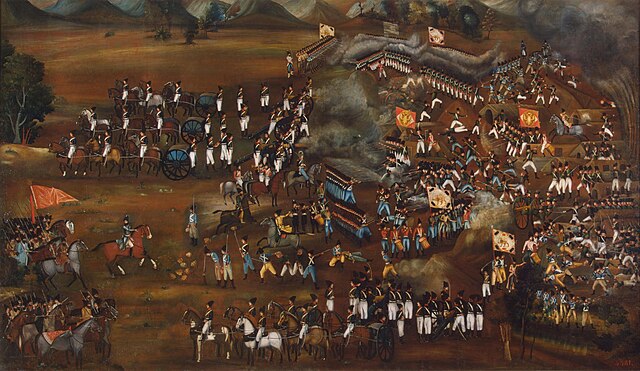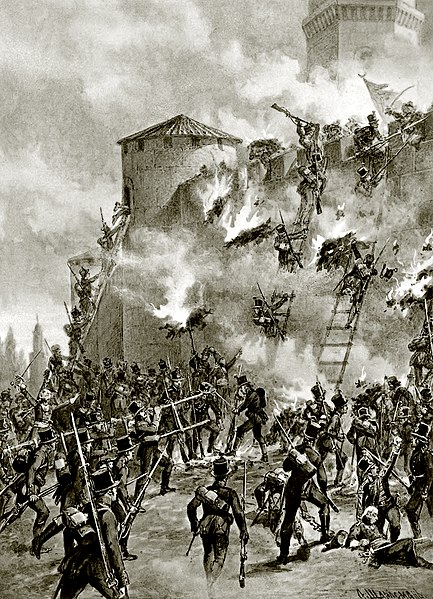The Treaty of Turkmenchay was an agreement between Qajar Iran and the Russian Empire, which concluded the Russo-Persian War (1826–1828). It was second of the series of treaties signed between Qajar Iran and Imperial Russia that forced Persia to cede or recognize Russian influence over the territories that formerly were part of Iran.
Signing ceremony of the treaty
Persian payment of indemnity in Tabriz
Treaty of Turkmenchay Cannon in Military Museum of Tehran
"Treaty of Turkmanchay" memorial medals. Museum of History of Azerbaijan, Baku.
Qajar Iran, also referred to as Qajar Persia, the Qajar Empire, Sublime State of Persia, officially the Sublime State of Iran and also known as the Guarded Domains of Iran, was an Iranian state ruled by the Qajar dynasty, which was of Turkic origin, specifically from the Qajar tribe, from 1789 to 1925. The Qajar family took full control of Iran in 1794, deposing Lotf 'Ali Khan, the last Shah of the Zand dynasty, and re-asserted Iranian sovereignty over large parts of the Caucasus. In 1796, Agha Mohammad Khan Qajar seized Mashhad with ease, putting an end to the Afsharid dynasty. He was formally crowned as Shah after his punitive campaign against Iran's Georgian subjects.
Battle of Sultanabad, 13 February 1812. State Hermitage Museum.
Storming of Lankaran, 13 January 1813. Franz Roubaud.
Battle of Ganja, 1826. Franz Roubaud. Part of the collection of the Museum for History, Baku.
A. Sharlmann "Battle of Ganja" during the Russo-Persian War (1804–1813)








